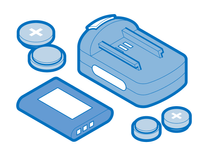The Basics
These first few steps may seem trivial; however, it is easy to forget the troubleshooting basics during times of frustration. Before you start any significant repairs to your device, please check the following:
- Restart your computer. It's Troubleshooting 101 for good reason. Restarting your laptop correctly (rather than by crash or hard shutdown) finalizes any pending repairs and restarts all systems services. Use the restart option in the Start Menu.
- Check your laptop's power mode by clicking the battery icon in the system tray. Adjust the slider for "better battery." This may noticeably impact the performance of your laptop, but it might be worth it to squeeze out some extra minutes.
- Adjust Screen Brightness: Lower the screen brightness to conserve battery power.
- Check for and Remove any Battery-Draining Peripherals: Disconnect any external devices drawing power from your laptop.
- Do a hard shutdown. This is as close as you'll get to pulling the battery in most models without a screwdriver. Shut down your laptop. Once it's off, press and hold the power button for 15-30 seconds. Wait a moment, then try to power on again.
- Run a battery diagnostic. Dell includes this function in its SupportAssist software. Alternatively, run a power report on your battery. This will rule it out as a cause early. Or, if issues are reported, skip past all the software fixes to battery failure.
Causes
Are you charging devices from your laptop? Are you powering devices like an external webcam, keyboard, speaker, etc?
- Try using your laptop without external accessories to establish baseline power usage. This will let you know how much battery life you can expect from normal use.
Sometimes, multiple devices, accessories, and settings could affect battery performance. Rule out variables to focus your efforts on the real issue.
Your laptop might be running too many programs and background services. Lower the amount of services and programs running at once.
- Open Task Manager by right-clicking on the Windows start menu.
- Select a program to close and click End task in the bottom right.
- You can get more information by clicking More details. The Startup tab shows what programs start with the computer, usually in the background. Disable any unnecessary startup programs.
Your laptop’s software settings may be pulling too much power. Adjust these settings to be more energy-conscious. Settings like screen brightness, sleep settings, and CPU usage are all things to tweak.
- There are general power plans available (Balanced, High performance, and Power saver). You can select one by opening the Control Panel from the Start menu and navigating to Hardware and Sound > Power Options. Switching to the Power saver plan helps reduce overall power consumption. Of course, you can always manually adjust these settings once in the Power Options section of the Control Panel.
- The Dell Command utility can also alter power settings. To find a download link for Dell Command, search Dell's website for your service tag or serial number.
Starting with Windows 10, battery saver mode that automatically adjusts several of these energy-mindful settings at once. These instructions are for Windows 11 but should be similar for Windows 10.
- Right-click the Start menu and choose Settings. From there, head to System > Power & battery > Battery saver. This is also available in the Quick Settings area at the bottom right.
Certain BIOS settings will affect your laptop’s performance and energy consumption. The BIOS is software installed on a chip on the motherboard. This chip and its software initialize hardware-related settings. This menu exists before the operating system, so you must boot into the BIOS before the operating system loads to change settings.
- Power off your laptop completely.
- Press the power and repeatedly press the F2 key. It will boot into the BIOS menu, where you can adjust various power-related settings.
- When finished, save and restart. Your laptop will boot into your operating system.
Batteries are a consumable device, and if you've been using your laptop for many years—or are just a bit unlucky—your battery might be worn out.
- Reseat the battery (or the battery connector )—some Dell laptop models make it easier than others.
- If you haven't already, run a battery diagnostic. Dell includes this function in its SupportAssist software. Alternatively, run a power report on your battery. This will give you some hard data about your battery.
- Check for visual signs of battery age, swelling, or leak. Swollen batteries may manifest as difficulty in using the trackpad or the keyboard. As the battery expands, it exerts upward pressure on the underside of these components.
- If your laptop has been in the trenches, you expose your stuff to extreme climates, or if you're just a power user who grinds through batteries, a replacement might be your best bet.
If you can't find a replacement guide for your model of Inspiron, don't fear—opening the laptop, unplugging the battery connector, and removing the screws holding in the battery is all it takes for most models.

- 15 - 20 minutesEasy

Find compatible replacement parts for your Dell Inspiron Series. All parts and fix kits are backed by the iFixit Quality Guarantee.
You're seeing solutions for Dell Inspiron Series. Select your model to find parts for your device.







